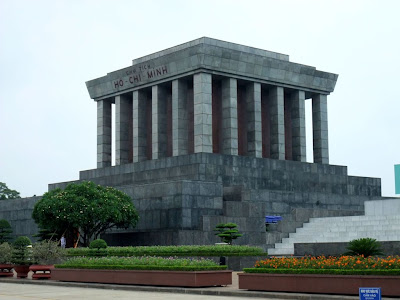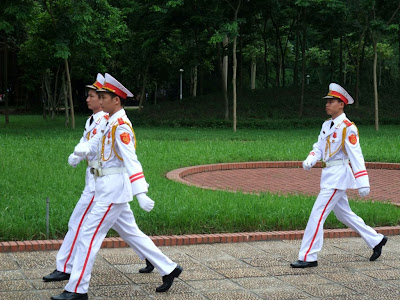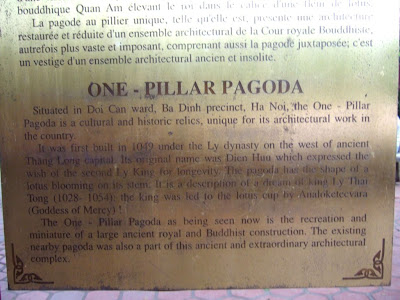
Mausoleum is a place to keep the remains of Vietnam President Ho Chih Minh (1889-1990) who is a great patriotic and national hero to Vietnamese. Ho Chih Minh had been conferred the title of "world Cultural Activist"


The Mausoleum has 3 layers with a combined height of 21.6 meter and is designed with Vietnamese architecture. . The remains of the President was placed in the 2nd layer for the public to pay tribute on a daily basis from 8 am to 10.30 am only and it is not opened on Monday and Friday.



Mausoleum is located in the center of Ba Dinh Square with Facade facing directly to the historic site. This was the place where President Ho Chi Minh read the "Declaration of Independence on 2nd Sept 1945, giving birth to the country Vietnam.


The Mausoleum was officially inaugurated on 29th August 1975, after a two years construction. The massive building is a combination of hero worship and modern art and a result of artistic labor of both Vietnam and former Soviet Union scientists.



Ho Chi Minh's resident, resting place and garden are at the back yard of this President Palace.



The striking President Palace.



Important colonial buildings at Ba Dinh Square.



Changing of guards.



Changing of guards and marching soldiers.



Ho Chi Minh's museum is surrounded by beautiful parks.


The Museum.



Chuo Mot Cot, The One Pillar Pagoda, stands in the park behind Ho Chi Minh's Mausoleum, is one of the Vietnam's two most iconic temples (the other one is Perfume Pagoda). It rises from one pillar from the middle of the square lotus pond. The original one was built in 1049 by Emperor Ly Thai Tong but was destroyed by French Union forces in 1954, who was angry for being thrown out of Vietnam as colonial masters. The present one was restored in April 1955.



The One Pillar Pagoda was originally a wooden temple with a stone pillar 1.25m in diameter. It was designed to resemble a lotus blossom which is a symbol of purity. Though the pillar of the present one is replaced by a concrete support, the square structure with curved up tiled roof still looks gorgeous.



According to Legend: The Pagoda was built by Emperor Ly Thai Tong (1028-1054) who had no child to become his heir. After he dream of Boddhisattva Avalokitesvara (Goddess of Mercy) handed him a baby boy while seated on a lotus flower, he married a peasant girl he met and she born him a son. In gratitude for this, The Emperor constructed the temple in 1049, following the scene he saw in his dream.



A gilded image of Boddhisattva Avalokitesvara with thousand hands and eyes, sitting in the dim interior upon lotus blossom with fruits and flowers offering from devotees. It is believed that Goddess of Mercy in this temple will bring you good health, long happiness and fertility. Young couples who are desperate for children often come and pray in the temple.



During Ly Dynasty, The Pagoda and Temple was the site of annual royal ceremony on the occasion of Wesak or birth date of Buddha. The Monarch practiced Buddha bathing and life liberation, which later attracted monks and laymen to follow as well.



Some ancient Stupa and open altar of Buddha Image in the park.



The Boddhi Tree was a gift given to President Ho Chi Minh during his visit to India in year 1958.



An old statue of Boddhisattva Avalokitesvara at the inner hall of Dien Huu Temple opposite One Pillar Pagoda.


Dien Huu Temple, formerly known as Lien Hoa Dai is in the same site of One Pillar Pagoda. The architectural features are very unique and outstanding. This ancient temple was built for expressing wish for longevity to the 2nd King of Ly Dynasty.



Great adornment at the main shrine of Dien Huu Temple.



The charming and ornte Dien Huu Pagoda is a great example of traditional Vietnamese architecture. It is another cultural and historic relic nearby Ba Dinh Square.




No comments:
Post a Comment